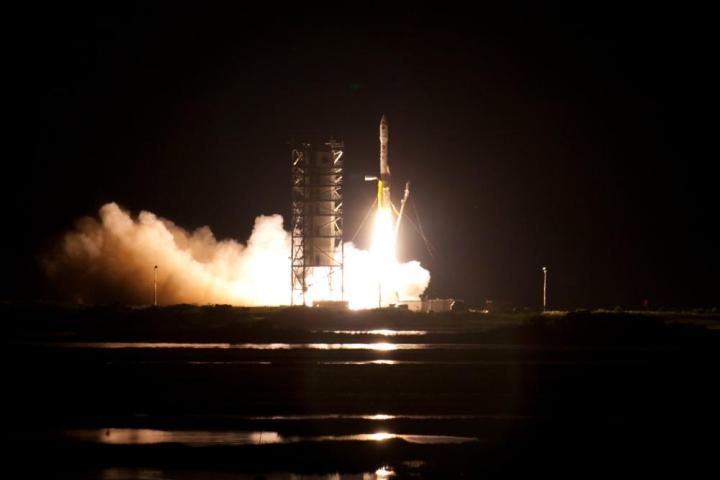
You may, for example, have tested absorbency levels of different types of paper towels, or investigated how various kinds of balls bounce. You might, if your teacher was of a particularly adventurous nature, have even inflated a balloon using baking soda and vinegar.
What you won’t have done is designed and built a satellite and sent it into orbit on board a space rocket.
Of course, the students at Thomas Jefferson High School for Science and Technology in Alexandria, Va., may well have started their science studies with paper towels, bouncing balls, and baking soda, but they were also lucky enough to move onto something far more advanced, on Tuesday becoming the first to send a fully functioning satellite into space.
The TJ3Sat nanosatellite, which weighs just 2 pounds and has dimensions of 3.9 × 3.9 × 4.5 inches, blasted off from Wallops Island, Va., on Tuesday night at around 8.15 pm ET. It took seven years to build and also involved input from corporate sponsor and rocket manufacturer Orbital Sciences.
According to the Washington Post, TJ3Sat is “designed to receive messages that the students send into space,” which it will subsequently rebroadcast using radio waves that can be picked up and listened to around the world via amateur radio.
The Post continues, “The satellite’s voice synthesizer will interpret lines of text phonetically, meaning that with slight tweaks in word structure, the messages can be ‘spoken’ in any language.”
Adam Kemp, a teacher leading the project, explained, “The idea is that schools around the world can have a limited ground station and be certified on amateur frequencies to be able to communicate to the satellite and back down.”
Carlos Niederstrasser, a systems engineer at Orbital Sciences, told ABC News that up until just 20 years ago only governments would have been able to take on this kind of project, with universities becoming involved about a decade ago.
“Now high school students, very early in their career, can really get their hands dirty working on a real space program going into space orbit,” the engineer said.
TJ3Sat is expected to stay in orbit for the next three months, sending out messages together with information about its position in space. When it burns up on its high-speed return to Earth, its final message is expected to be, “I’m melting,” bringing the curtain down on a groundbreaking project that will hopefully pave the way for many more of a similar kind.
[Image: NASA]



